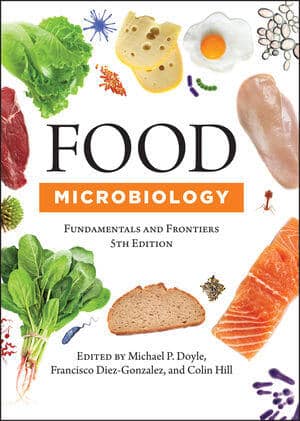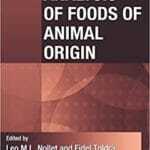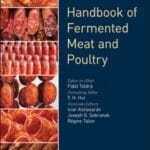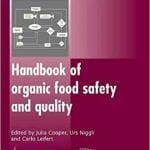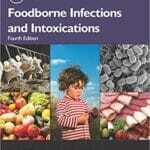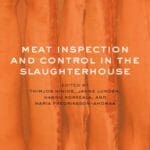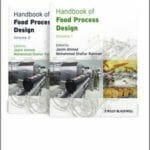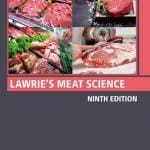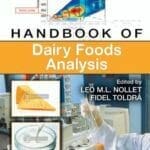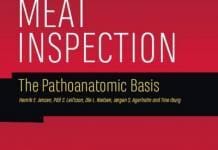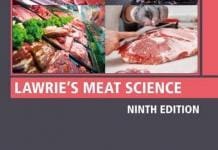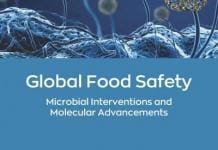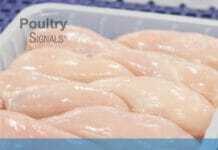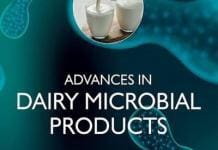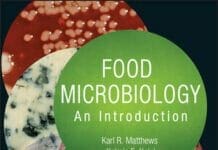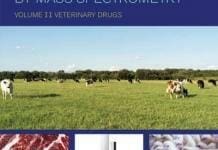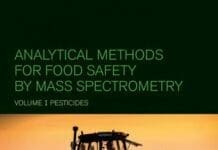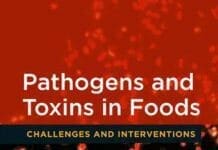Contributors
Preface
Editors
I. Factors of Special Significance to Food Microbiology
1. Behavior of Microorganisms in Food: Growth, Survival, and Death
Ahmed E. Yousef and Ahmed G. Abdelhamid
2. Spores and Their Significance
Peter Setlow and Eric A. Johnson
3. Microbiological Criteria and Indicator Microorganisms
Leon G. M. Gorris and Jean-Louis Cordier
4. Stress Responses in Foodborne Bacteria
Francisco Diez-Gonzalez
II. Microbial Spoilage and Public Health Concerns
5. Milk and Dairy Products
Zhengyao Xue and Maria L. Marco
6. Meat and Poultry
Manpreet Singh and Harshavardhan Thippareddi
7. Microbiological Issues Associated with Fruits, Vegetables, Nuts, and Grains
Marilyn C. Erickson
III. Foodborne Pathogenic Bacteria
8. Epidemiology of Foodborne Illnesses
Craig W. Hedberg
9. Salmonella
April M. Lewis, Melanie C. Melendrez, and Ryan C. Fink
10. Eleven Campylobacter Specie
Ihab Habib, Lieven De Zutter, and Mieke Uyttendaele
11. Shiga Toxin-Producing Escherichia coli
Narjol Gonzalez-Escalona, Jianghong Meng, and Michael P. Doyle
12. Shigella
Christina S. Faherty and Keith A. Lampel
13. Vibrio Species
Daniela Ceccarelli, Carmen Amaro, Jesus L. Romalde, Elisabetta Suffredini, and Luigi Vezzulli
14. Cronobacter Species
Ben D. Tall, Gopal Gopinath, Jayanthi Gangiredla, Isha R. Patel, Séamus Fanning, and Angelika Lehner
15. Aeromonas
Troy Skwor and Stanislava Kralova
16. Yersinia enterocolitica
Dike O. Ukuku and Mohammad Latiful Bari
17. Listeria
Elliot T. Ryser, Robert L. Buchanan, and Henk C. Den Bakker
18. Clostridium botulinum
Eric A. Johnson
19. Clostridium perfringens
Santos Garcia, Jorge E. Vidal, Norma Heredia, and Vijay K. Juneja
20. Bacillus cereus
Toril Lindbäck and Per Einar Granum
21. Staphylococcus aureus
Joo Youn Park and Keun Seok Seo
IV. Nonbacterial Pathogens/Toxins
22. Mycotoxins
Marta H. Taniwaki and John I. Pitt
23. Foodborne Viral Pathogens
Kristen E. Gibson, Doris H. D’souza, And Aron J. Hall
24. Helminths in Meat
Dante S. Zarlenga and H. Ray Gamble
25. Protozoan Parasites
Ynes R. Ortega
V. Preservatives and Preservation Methods
26. Novel Physical Methods for Food Preservation
Luis J. Bastarrachea and Rohan V. Tikekar
27. Chemical Preservatives and Natural Food Antimicrobials
T. Matthew Taylor, Sadhana Ravishankar, Kanika Bhargava, and Vijay K. Juneja
28. Biological Control of Food-Challenging Microorganisms
Richard Weeks and Michael Leonidas Chikindas
29. Bacteriophages for Biological Control of Foodborne Pathogens
Yilmaz Emre Gencay and Lone Brøndsted
VI. Fermentations and Beneficial Microbes
30. Starter Cultures
Jennifer Mahoney, Olivia Mcauliffe, Paul D. Cotter, and Gerald F. Fitzgerald
31. Diet, Health, and the Gut Microbiota
Cian J. Hill, Francesca De Filippis, and Ian B. Jeffery
32. Probiotics and Prebiotics
Mary Ellen Sanders, Yong Jun Goh, and Todd R. Klaenhammer
33. Fermented Foods
Michael Gänzle
VII. Current Issues and Advances in Food Microbiology
34. Antimicrobial Resistance, Gut Microbiota, and Health
Hua Wang, Yang Zhou, and Lu Zhang
35. Genomics of Foodborne Microorganisms
Caitriona M. Guinane, Calum Walsh, and Paul D. Cotter
36. Metagenomics of Meat and Poultry
Margaret D. Weinroth, Noelle R. Noyes, Paul M. Morley, and Keith E. Belk
37. Food Microbiomes: A New Paradigm for Food and Food Ecology
Andrea R. Ottesen and Padmini Ramachandran
38. Molecular Source Tracking and Molecular Subtyping
Peter Gerner-Smidt, Eija Trees, Heather Carleton, Lee Katz, Henk Den Bakker, and Xiangyu Deng
39. Predictive Microbiology and Microbial Risk Assessment
Abani K. Pradhan, Abhinav Mishra, and Hao Pang
40. Food Safety Management Systems
Kelly Stevens and Scott Hood
41. Microbiological Constraints for Use of Reclaimed and Reconditioned Water in Food Production and Processing Operations
Marilyn C. Erickson and Mussie Y. Habteselassie
42. Relevance of Food Microbiology Issues to Current Trends (2008–2018) in Food Production and Imported Foods
Marilyn C. Erickson and Michael P. Doyle
Index
